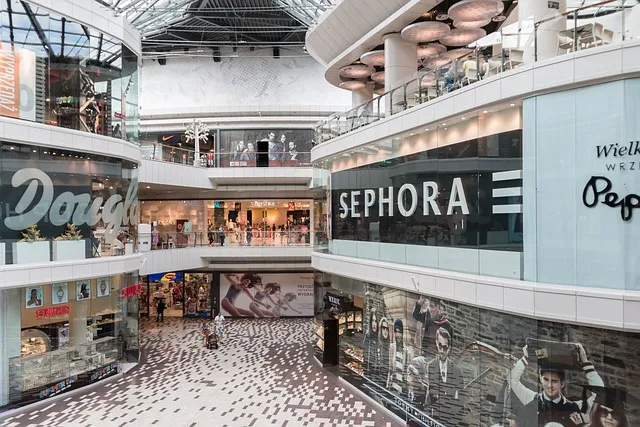I make no claims to be fashionable. I have never had the driving urge to get the latest styles into my wardrobe. Maybe it's partly because my introverted nature makes me avoid the attention-seeking nature of being stylish. Maybe it's because I grew up in a middle class rural home with an awareness of budgets and the difficulty involved in going shopping when it meant going somewhere dozens of miles away to shop. Perhaps my jobs requiring some level of "business casual" as the minimum dress code has had an influence.
In any case, my preference leans toward durable clothes with a slightly more timeless appearance instead of striving to stay on the bleeding edge of cool. I usually wear denim blue jeans or khaki trousers, simple t-shirts in casual situations, and an Oxford or flannel button-down shirt for work. I wear plaid, but avoid bold logos or patterns generally.
Much of my clothing is from thrift stores, garage sales, and clearances. I don't like spending more than I must, although I do occasionally spend money to buy something new if it's needed and likely to last a long time. Even as a kid, clothing that wasn't a hand-me-down from an older relative was bought intending it would serve someone else when I outgrew it.
In contrast to my frugal and conservative fashion, there is the concept of fast fashion. Men's fashion in general is not as volatile as women's fashion. The shopping mall may be dying a slow death, but it has primarily been geared toward women window-shopping since the start of the modern mall phenomenon. Window shopping wasn't new, of course, and goes back much earlier than that.
Modern American shopping malls arguably began in Minnesota with the Southdale Center in a Twin Cities suburb in 1956. That was well before my time, but malls booked in the '80s and '90s. My childhood memories include the hype around the Mall of America, and I remember my dad bought my mom a copy of Mall Madness as a gag gift, leading to gamified shopping spree family board game nights. Malls were destinations for TV characters, film scenes, and plot points in fiction. Even without frequent visits on my part, it was a part of the cultural landscape, and the idea of fast fashion dominated even then. It still does today even though the big anchor stores selling a greater variety of goods have crumbled over the last decade.

Spurce
In short, this phenomenon is dominated by stores and brands built on fast turnaround to drive, capitalize upon, and then discard, the fleeting trends of the fashion world. Cheaply-made attire floods in and then vanishes just as quickly, encouraging impulse buys because there is no guarantee a given garment will remain in stock. Since today's fashion is so quickly out of style tomorrow, there is little need for quality. It is the epitome of planned obsolescence and disposable waste. Flimsy fabrics offer little durability or winter warmth. Thrift stores often can't re-sell donated fast fashion because it is outdated and often irreparably damaged on arrival.
I know some women who consciously buck these trends and seek some degree of timeless elegance or utilitarian durability as their primary fashion focus. This much more closely matches my habits. Some prefer to "buy once, cry once" and have something that will last for years. Others know their clothing will be used outdoors and around animals, and don't want it tattered and torn by the rigors of living life. This doesn't necessarily mean not looking good, but it does require a change of focus from ephemeral fashionable popularity.
One cannot deny the waste inherent in cheap manufacturing, transportation, retailing, and eventual disposal of fast fashion standing as an often-overlooked economic and environmental disaster overall. On one hand, it employs people in the developing world, providing employment and wages. On the other hand, this can be seen as exploitation of the disadvantaged. Opinions are strong on all fronts here.
It may be a subjective observation on my part, but there seems to be a correlation between how people treat fashion, and how they treat relationships. People who chase trends are motivated by something different from people who want something durable. I think fashion can be a signal, although by no means a perfect correlation, to how someone treats other matters in life.
Clothing is undeniably a communication system. We dress certain ways because it tells others something in the visual language of our culture. There is no justification for sexual harassment or worse, but women who wear clothing our culture deems sexy send a signal, and fast fashion often implies flirtatious intent. Think about what your clothing says to others. If I walk into Walmart wearing khakis and a blue polo shirt, is it unreasonable for people to assume I'm stocking shelves, and start asking me where to find something?
All this rambling nonsense is more stream-of-consciousness than anything else. I'm not sure I even have a point. Be aware of what your attire signals. Fast fashion isn't necessarily an evil to be vanquished, but I advise people to spend wisely on something durable instead of discardable. Think about your approach to everything in life that way, too, from relationships to power tools to trousers.
Whether you are just a frugal person trying to get by in an unstable economy or an activist out to change the world, give some thought to your choices. Civilization was built by people with an eye to the long term. A lot of nostalgia for the past is based on what stood the test of time in spite of changing tastes. It's not always, "They don't make it like they used to," but, "This wasn't made the way most was." Maybe there's a life lesson in there somewhere. I don't know. Don't be average. Find your way to be exceptional. Changing the world is a big job. Change what you can yourself with small steps. Who knows? Maybe it starts with buying a better shirt or dress.
